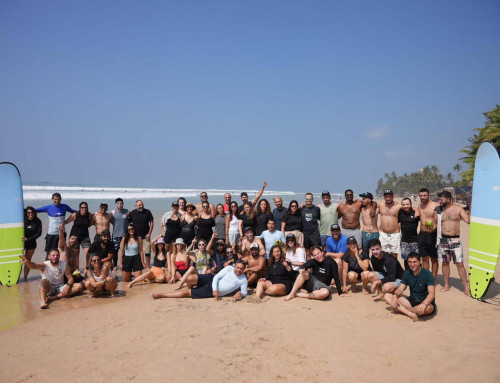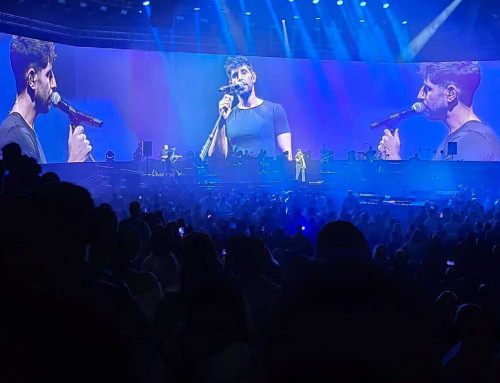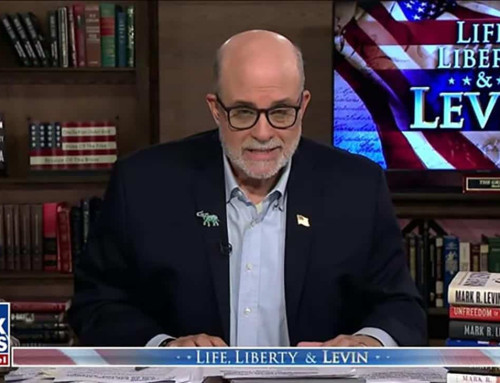Original source: Article published in The Jewish Press – by Ronda Lewis
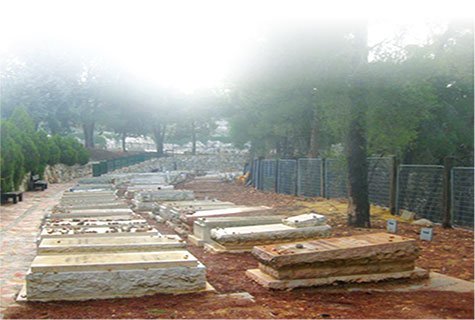
The Attack
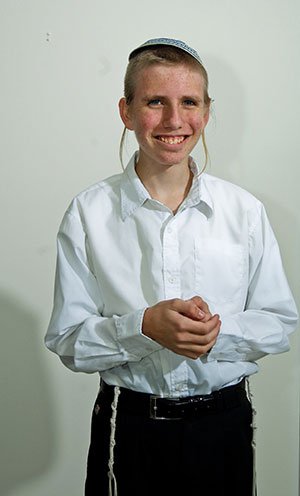
After hours of driving back and forth between hospitals, Naftali received confirmation that Avraham hadn’t been brought to any of them. Together with his eleven-year-old son Elisha, he drove to the yeshiva. The noise, the lights and the crowds created what Naftali describes in his book as “a surreal carnival scene.” Here, as he was being ushered to a quiet corner by two social workers, Rav Yerachmiel Weiss, the Rosh Yeshiva of Mercaz HaRav, pulled Naftali into a hug and uttered the words that confirmed what he had refused to contemplate: “Hashem gives; Hashem takes away.”
Asked what gives him the strength to continue in the face of such tragedy, Naftali answers quickly: “One Family – and it’s not a pat answer. Here you’re given the chance to be with people who have been through it and you don’t need words to build bridges. Ayelet, my younger daughter, says that her best friends are the girls she knows from One Family…and she sees them only three times a year.”
Teenaged Son not Martyr
Naftali has four children: Avraham David z”l and Elisha Dan from his first marriage; Ora Dina and Ayelet from his second. Avraham was learning at Yashlatz (Yeshivat Yerushalayim L’Tzeirim) Mercaz HaRav’s high school, one of religious Zionism’s top institutions. During his last year, he had been learning about eighteen hours a day, barely eating or sleeping. Both the administration and his parents were worried: he was obviously struggling with something. Yet, Naftali, who refuses to have the memory of his son usurped into the role of a martyr, remarks that Avraham was “a teenager, with all the problems that come with the territory.” He still knew how to roughhouse with his brother Elisha!
In one of Naftali’s last conversations with Avraham David, they talked about the connection between the physical and the spiritual worlds. Avraham David felt that he could afford to ignore his body and focus entirely on his soul. Naftali, however, using the parable of a musician creating music, explained that just as a musician needs his fingers, an instrument and the notes to create a melody, a person needs, and can use, his body to refine his soul. Father and son never had the chance to reach an understanding.
But Naftali found a way to continue the conversation. During the year after the attack, he organized two concerts: the first in Avraham’s memory; the second, held at Hebrew University, as a memorial for all eight boys. On Avraham’s first yartzheit, Naftali organized a concert in Efrat, where he lives. He opened with the following words: “This is a night to reflect on loss and to ask for God’s mercy, in the place of those who can no longer ask…I need the Holy One to help heal the hole torn in my heart a year ago.”

This is the last column on Victims of Terror. Thank you to all the heroes and heroines who revisited their pain in order to share it. Thank you to One Family and to The Jewish Press for giving us the chance to open up our minds and hearts to the victims. May our heightened awareness stay with us and make us into people who reach out.
* * * * * * * * *
The Inside Story
In his book, Mourning Under Glass, published a year after Avraham’s death, Naftali describes the horror of the attack and the agony of burying his firstborn son. He draws the reader into his own labyrinth of emotions by raising several issues about the mourning process and beyond.
Does the sanctity of a “martyr’s death” do anything to heal the profanity of vicious murder?
Naftali’s words: Although we had been there for hours already, it was nearly 4:00 a.m. when we were ushered in to a small room off to the side of the library. There, a police detective… told us that our son had died “like a hero.” I wasn’t sure what he meant then and I’ve wondered about it since. I think that usually one would say this about someone who had done something considered, well, heroic – fighting back, hitting out, sacrificing himself to save others. But my son, and four others, had been slowly hunted down in the library stacks – shot as they crouched between the holy books – listening to the shots that took the lives of those killed before them, and the cries of the dying and wounded…This was their “hero’s death.” This was their end.
For us to think about: Do we call the victims martyrs in order to help ourselves cope with the horror?
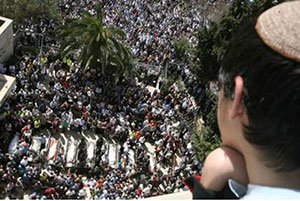
Naftali’s words: For me and my family, though, this was a beginning. We were suddenly thrust into new roles as part of a select group – “the bereaved families.” This is a uniquely Israeli sub-tribe… Lights, cameras… interviews—suddenly our ordinary children were “holy martyrs” and we, somehow, perhaps by way of association, perhaps as part of some public defense mechanism unable to accept the utter horror of these cruel deaths, we became heroes ourselves…I am not a hero. Nothing in my life has ever been epic. I have striven for and attained comfortable anonymity… To the terrible weight of loss was added the oddity of a nearly macabre notoriety… I have asked myself time and again whether pain made public becomes something else: something more, something less, something better, something worse…
For us to think about: Naftali received hundreds of letters from family friends and teenage yeshiva students. “They felt my loss was their loss as well,” he writes. Can we too cross the bridge from mere sympathy to deep empathy?
Does a memorial keep your memories alive?
Naftali’s words: I am concerned about preserving my son’s memory. I worry that the public aspect of memorialization is wearing away at something better kept safe inside…His memory resides in those who knew him. And the longing and pain of loss…rests on those gossamer threads of remembrances. The gaping hole torn in my heart by my son’s death was too raw to find solace in any of the memorial events planned by others.
For us to think about: A memorial serves as some sort of closure. But sometimes, while the public is ready for, and craves, that closure, the bereaved family may not be ready for it. They may feel that the memorialization is being built on the ashes of their loved ones. In addition, the bereaved may feel that the memorialization being planned doesn’t reflect the essence of their loved one…and that it is therefore missing the point.
How is such tragedy parsed into something of meaning? Or is it?
Naftali’s words: There were some kaddishes that I thought I would not complete…part sob, part prayer, the words continued, as I tried to breathe through the sobbing that wracked me with a weight of emotion I had no idea existed within me.
For us to think about: Ora Dinah, Naftali’s elder daughter, was seven years old when Avraham was killed. Old enough to know the when, how, and why. Shortly afterwards she made a comment that made Naftali shiver: “Learning Torah doesn’t protect you,” she said. “Avraham was learning and he was killed.” Naftali took her to Rav Reem HaCohen. Rosh Yeshiva of Otniel, someone he could trust to speak to her on her level. Rav HaCohen took a large book, Kuntras HaShiurim by Rav Gustman, off his bookcase. He read an excerpt written by the son-in-law of the author in which he describes the visit of a dignitary to Rav Gustman while he was in a DP camp in Europe. “Nissim uniflaot, miracles and wonders,” the dignitary exclaimed upon hearing about Rav Gustman’s miraculous survival. “Not in the least!” retorted Rabbi Gustman. “By calling my survival a miracle, you are adding your own interpretation to the events. What about all the others who didn’t survive? All we can say is that it was Hashem’s will.”
Naftali gauged Ora Dinah’s reaction. “She was comforted,” he says. “She realized that it is all inexplicable and that we cannot say a word.”
Naftali can be reached through his website, www.tragic-death.com.

![[Podcast] Heartthrob Idan Amedi Concert Coverage](https://onefamilyfundus.org/wp-content/uploads/2025/03/heartthrob-Idan-500x383.jpg)
